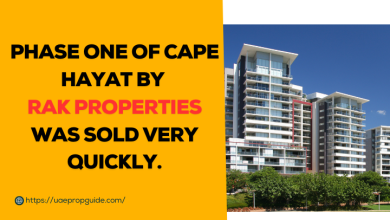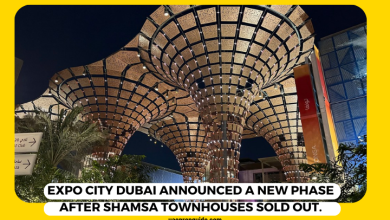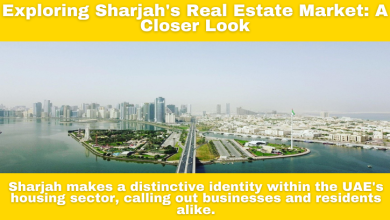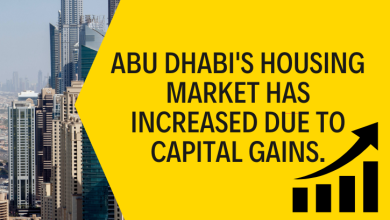Dubai Sees AED23.1B Real Estate Deals in a Week
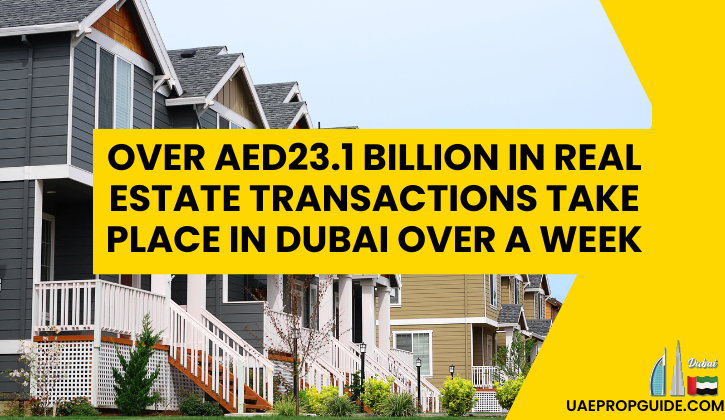
For the week ending August 25, 2023, 3,229 real estate transactions totalling more than AED 23.1 billion were completed, according to data released by the Dubai Land Department (DLD).
183 plots were sold for AED 1.33 billion, and 2,361 apartments and villas were purchased for AED 5.77 billion, according the DLD data.
The top three transactions comprised the sale of three plots in Al Barshaa South Second, Palm Jumeirah, and Madinat Dubai Almelaheyah, for a combined total of AED 93.37 million, 76 million, and 64.1 million, respectively. For those interested in understanding the value of properties in the region, using a property valuation calculator dubai can be a useful tool.
Madinat Al Mataar had the most sales transactions this week with 51 totaling AED 182.3 million, followed by Al Hebiah Fifth with 24 totaling AED 59.3 million and Saih Shuaib 1 with 19 totaling AED 33 million.
Three properties on the Palm Jumeirah sold for AED 65,000,000, AED 57,000,000, and AED 54,000,000, respectively, making them the top three transfers of apartments and villas.
The value of mortgaged real estate for the week was AED 15.75 billion. In the interim, first-degree relatives received 121 properties worth AED 301 million.
Dubai’s Luxury Property Sector Leads The Global List, With Prices Growing by Almost 50%.
As of June 2023, prices in the emirate had increased by 48.8%, making Dubai the world’s top market for luxury real estate, according to a Q2 2023 analysis by Knight Frank.
Due to the largest global rise ever recorded, Dubai is currently leading the Prime Global Cities Index for the ninth consecutive quarter.
Due to the outbreak, property values in the emirate reached a low in Q3 2020, but have since increased by 225%.
Dubai’s rapid expansion is still going strong. For the eighth straight quarter, the emirate kept the top spot in our list, according to Knight Frank’s research.
Tokyo and Manila ranked second and third, respectively, on Knight Frank’s chart for the increase of luxury property prices, with annual price growth rates of 26.2% and 19.9%, respectively.
Miami rose to fourth place with a 7.5% improvement, followed by Shanghai (6.7%).
The valuation-based index tracks the prices of lavish residences around the globe.
Average annual price increases in the 46 survey areas were 1.5%, which represents an improvement over the previous quarter.
Despite price reductions in 14 areas during the same time period, 57% of the cities reported price rises for the quarter.
The strongest rate of growth since the third quarter of 2022, according to Knight Frank, is the 1.5% average annual growth, which is still moderate and much behind the recent peak of 10.2% witnessed in the final quarter of 2021.
However, other big markets have slowed down. Toronto is one of these markets, where prices decreased by 0.1%, while other markets with price declines include London (-0.5%), Brisbane (-1%), Beijing (-1.5%), Hong Kong (-1.5%), Los Angeles (2.5%), and New York (-3.9%).
Dubai’s Population Will Skyrocket, Creating a Housing Deficit.
The residential market in Dubai may see a long-term scarcity due to a predicted increase in population, necessitating a development boom.
A demand for human resources is anticipated as a result of outside pressures like the recently published Dubai Economic Agenda, or “D33,” which lays out a strategy for the emirate to double its GDP by 2033, according to a projection made by the real estate consultancy firm Knight Frank. The population of Dubai is expected to have increased from its current 3.5 million to roughly six million by this time, and according to the Dubai Urban Master Plan 2040, it will eventually reach 7.8 million.
A massive housing development boom will be required due to the city’s anticipated population rise. Faisal Durrani, Partner – Head of Research, Middle East & Africa for Knight Frank, stated that in order to meet population goals, which the government anticipates will rise to 7.8 million by 2040, the city’s current housing stock will essentially need to quadruple.
The long-term predicted shortage of housing is already evident from the signals. First, there is Dubai’s GDP, which increased by 2.8% in the twelve months ending in Q1 and continued to be dominated by industries like retail, trade, aviation, and hospitality. As a result, the city earned the distinction of having the highest global average hotel occupancy levels in H1 at 78% across the emirate’s roughly 150,000 rooms. Additionally, the emirate’s PMI for the non-oil industry has been in expansionary zone for more than 2.5 years. There is a Grade A office supply shortage as a result of businesses actively hiring new employees and growing, he continued.
Analysts predict that new home development will increase across the rest of the city even though supply is already constrained in Dubai’s most coveted districts.
By the end of 2028, Knight Frank projects that 85,200 dwellings will be finished, with 59,000 apartments making up 69% of those homes. 40,000 homes are expected to be completed this year, with some possibly happening in 2019.
According to Shehzad Jamal, Partner – Head of Strategy & Consultancy, Middle East & Africa, Knight Frank, “Excluding 2023 and assuming all 40,000 homes forecast to be completed this year are delivered on time, 42,500 units are scheduled for completion between 2024 and 2028, representing an average of just 8,500 homes per year – a 75% reduction on the long-term rate of home deliveries.”
The industry expert observed that given the rate of inflation and the expanding population, it was certain that costs would also continue to climb.
Persistent Demand
The emirate’s real estate market saw 76,119 deals worth 283 billion dirhams (about $77 billion) in the first half of the year, with demand from foreign investors also being fuelled by the highly sought-after Golden Visa.
The cost of real estate in Dubai has increased, according to the most current data by Knight Frank, with the sector recording gains of 4.8% over the first quarter and 17% over the entire year.
According to data, prices for apartments have climbed by 21% since January 2020, with the current average price per square foot being AED 1,290. In the same time frame, villa prices—which are still in demand—have increased even more, rising 51% to an average of AED 1,520 per square foot.
Despite the significant price gain, citywide values are still 11% below their 2014 peak. Furthermore, the rather long-term trend in price increase is still going strong and shows no indications of diminishing. When it comes to villas, the supply-demand dynamic is still out of balance, so all market dynamics, if anything, point towards further increases, according to Durrani. He added that this was particularly true in the city’s premium markets of Jumeirah Bay Island, Emirates Hills, and the Palm Jumeirah, where villa prices have increased by 11.6% in Q2 and by a125% since January 2020.
Not to be outdone, villa prices in the remaining parts of the city are also sky-high and are 5% higher than their 2014 peaks. On a price-per-square-foot basis, more cheap places are also seeing significant price rises. The fastest rate of growth in the city was experienced by villas in Dubai Hills Estate, where values increased by 24% in just the last year.
